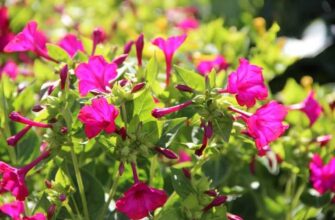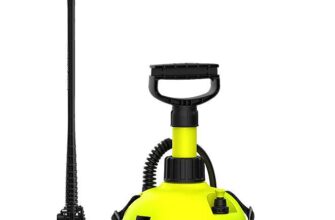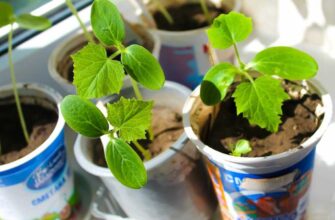- Краткая история происхождения
- Разнообразие видов
- Описание популярных сортов
- Рододендрон ‘Nova Zembla’
- Рододендрон ‘Pink Delight’
- Рододендрон ‘Purple Splendor’
- Рододендрон ‘Cunningham’s White’
- Рододендрон ‘Golden Lights’
- Рододендрон ‘President Roosevelt’
- Условия содержания и выбор места для посадки
- Световой режим
- Почва
- Влажность
- Подготовка почвы и правила посадки
- Полив и удобрение
- Подрезка и формирование кроны
- Защита растений от вредителей и болезней
- Предотвращение атак вредителей
- Профилактика болезней
- Фотогалерея рододендронов
- Вопрос-ответ:
- Какой рододендрон лучше всего подходит для выращивания в саду?
- Как правильно ухаживать за рододендроном?
- Какие вредители и болезни могут атаковать рододендрон?
- Какие сорта рододендронов самые популярные?
Рододендрон – это красивое растение семейства вербеновых, которое считается одним из самых популярных в мире. Оно привлекает своей изящной кроной, крупными и яркими цветками, а также широким разнообразием видов. Рододендроны произрастают в различных уголках мира, в том числе и в России. Они могут радовать весь год своими живописными цветами, идеально вписываясь в ландшафт любого сада.
Уход за рододендроном не такой уж и простой, но он стоит своей красоты. Это требовательное растение нуждается в особых условиях содержания. Во-первых, рододендроны не терпят прямого солнечного света, поэтому их необходимо высаживать на полутеневые участки или в оттенке деревьев. Во-вторых, рододендроны нуждаются в кислой почве, богатой гумусом. Предпочтительна сернокислая почва с pH 4,5-5,5. Также важно регулярно подкармливать рододендроны органическими или минеральными удобрениями.
Великолепие рододендрона проявляется в множестве его видов. Существуют около 1000 видов рододендронов, среди которых можно найти как вечнозеленые, так и лиственнопадающие виды. От простейших дикорастущих видов до самых крупноплодных групп – рододендроны удивляют своим разнообразием. Некоторые из них имеют кустарниковую форму, а другие вырастают в виде маленьких деревьев, хорошо украшая местность своей уникальной красотой.
На фотографиях рододендроны выглядят очень эффектно и ярко. Цветы могут быть самых разных оттенков: от нежного розового до насыщенного синего. Кроме того, лепестки рододендронов могут иметь различную форму: одиночные, полумахровые, махровые, звездчатые. Фотографии рододендронов – настоящая находка для любителей красивых цветов и растений, а также полезный способ выбрать сорт для своего сада.
Краткая история происхождения
Рододендрон, также известный как азалия, является одним из самых известных и популярных растений семейства вересковых. Его происхождение связано с горными районами Азии и Северной Америки, где растет более 800 видов этого растения.
Первые упоминания о рододендронах встречаются еще в древних греческих и римских легендах, где растение символизировало красоту и вечную молодость. Впервые рододендроны были описаны ботаником Карлом Линнеем в XVIII веке и получили свое научное название от греческих слов rhodo (розовый) и dendron (дерево).
В XIX веке рододендроны стали популярными среди садоводов и садовых энтузиастов, которые начали активно выращивать и разводить новые сорта и гибриды этого растения. В то время великобритания стала центром селекционной работы с рододендронами, а после второй мировой войны их популярность распространилась по всему миру.
Сегодня рододендроны широко используются в ландшафтном дизайне и озеленении садов и парков. Их красивые цветы и зеленые листья делают их популярными растениями для создания живых изгородей, клумб и цветочных композиций. Разнообразие видов и сортов рододендронов позволяет каждому найти именно тот, который подойдет для его сада или участка.
Разнообразие видов
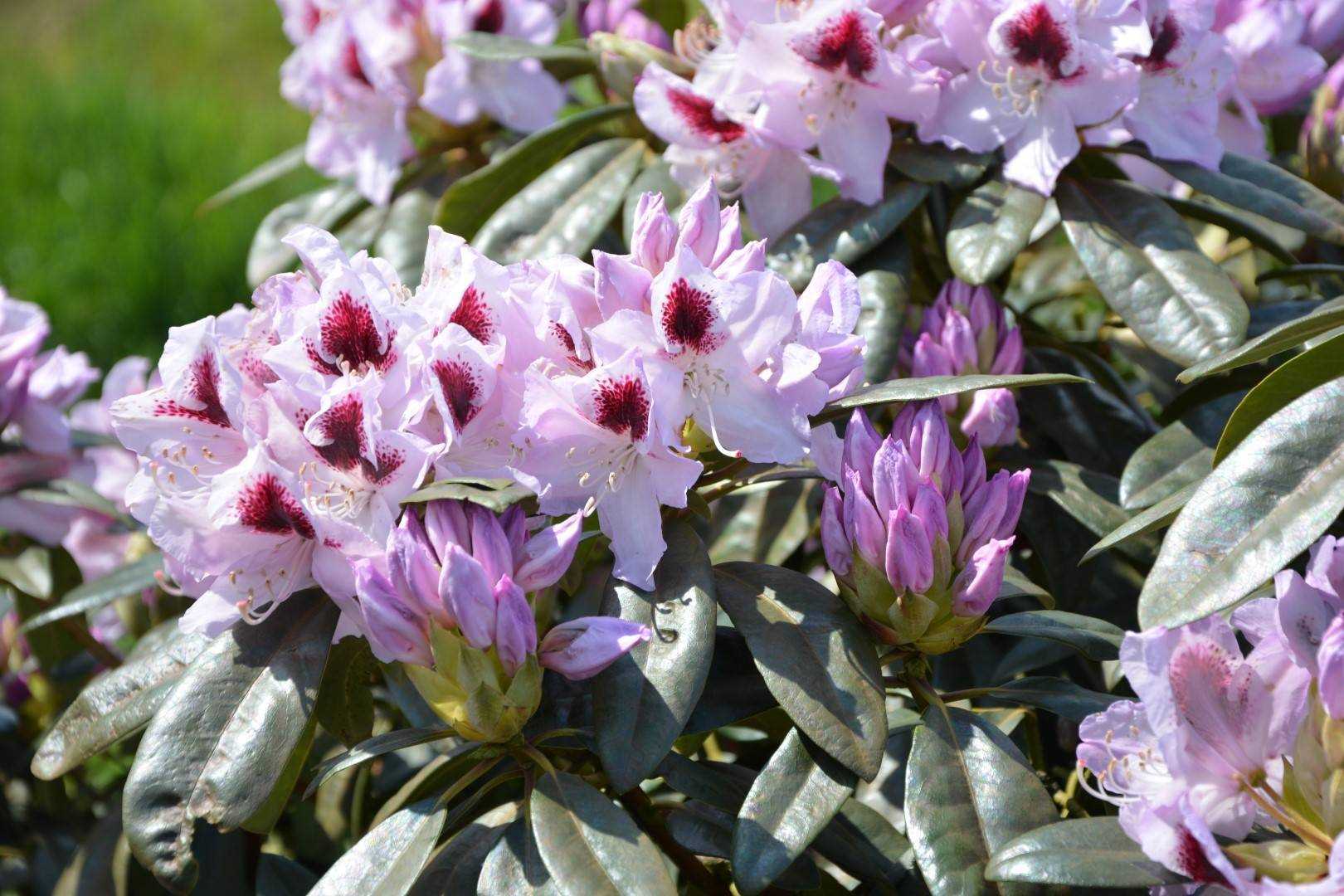
Рододендрон (Rhododendron) – это крупные и красивые цветущие кустарники, которые привлекают внимание своей удивительной красотой и разнообразием видов. В мире существует более 1000 видов рододендронов, каждый из которых уникален своими узнаваемыми особенностями.
Виды рододендронов можно разделить на две основные группы: вечнозеленые и опадающие. Вечнозеленые виды радуют глаз своей зеленой листвой круглый год, несмотря на сезонные изменения. Опадающие виды, напротив, теряют листву на зиму, чтобы весной снова радовать своими красивыми цветами и свежей зеленью.
Каждый вид рододендрона имеет свои особенности и требования к условиям выращивания. Некоторые виды предпочитают солнечные места, другие – полутень или плотную тень. Некоторые виды требуют более влажного почвы, а другие – сухой. Все эти различия делают рододендроны уникальными и позволяют подобрать подходящий вид для любых условий.
Известны как крупные и высокие виды рододендронов, достигающие нескольких метров в высоту, так и маленькие и компактные виды, которые отлично подходят для выращивания в горшках и контейнерах. Некоторые виды радуют глаз окраской листьев, например, фиолетовыми или красно-оранжевыми оттенками, а другие – крупными и яркими цветами различных оттенков: от белого и розового до фиолетового и оранжевого.
Описание популярных сортов
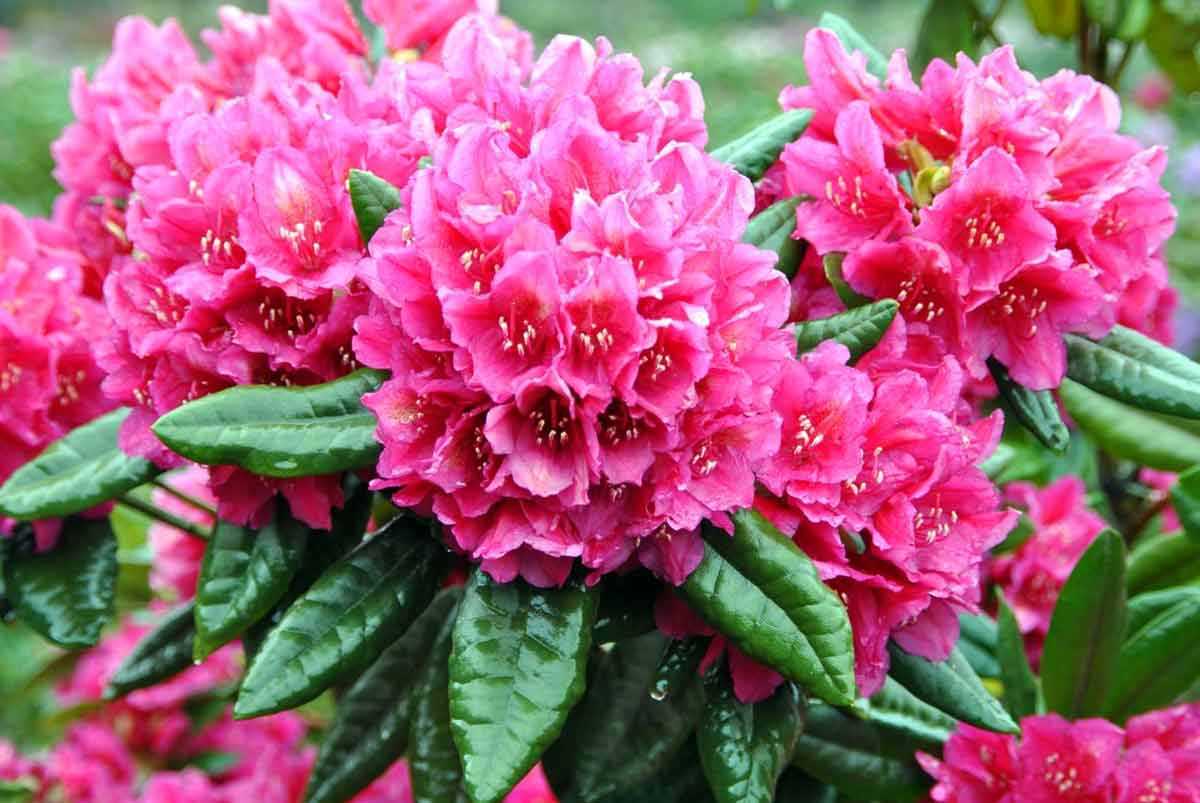
Рододендроны включают в себя множество различных сортов, привлекающих внимание своими красивыми цветами и разнообразием форм и размеров. Ниже представлено описание некоторых популярных сортов:
Рододендрон ‘Nova Zembla’

Сорт ‘Nova Zembla’ известен своими яркими красными цветами. Они отлично контрастируют с глянцевым зеленым листьям. Растение имеет шаровидную форму и достигает высоты около 1,5 метра.
Рододендрон ‘Pink Delight’
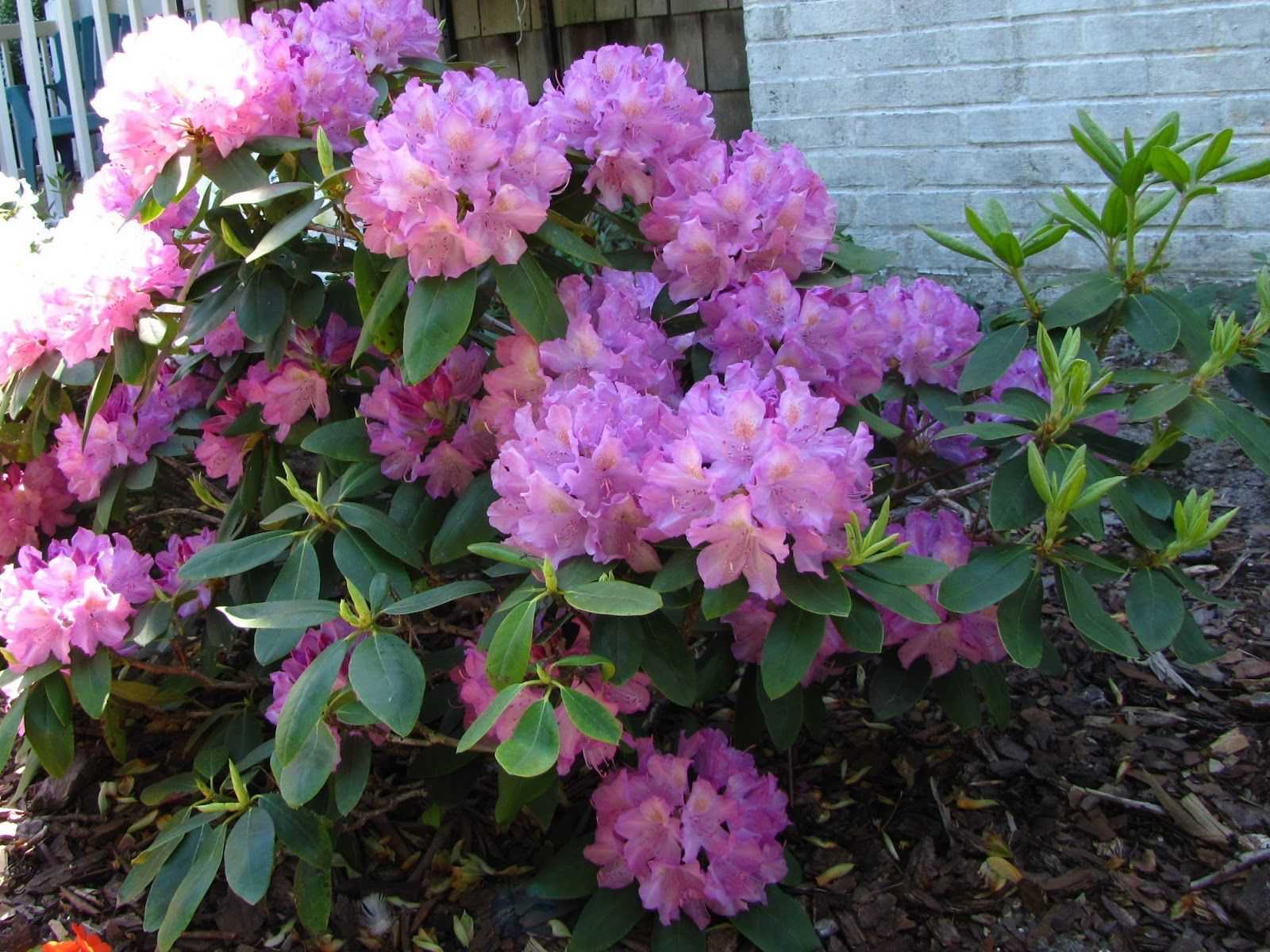
‘Pink Delight’ — это сорт рододендрона с крупными розовыми цветами. Бутоны имеют кремово-розовый оттенок, а по мере распускания цветы приобретают более яркий розовый цвет. Растение компактное и обильно цветущее.
Рододендрон ‘Purple Splendor’

Сорт ‘Purple Splendor’ привлекает внимание своими фиолетовыми цветами. Они имеют насыщенный глубокий оттенок и красиво контрастируют с зелеными листьями. Растение имеет прямостоячую форму и может достигать высоты около 1,2 метра.
Рододендрон ‘Cunningham’s White’
‘Cunningham’s White’ — это сорт рододендрона с чисто белыми цветами. Они имеют нежный аромат и появляются богато и продолжительно. Растение имеет плотную округлую форму и может достигать высоты около 1,5 метра.
Рододендрон ‘Golden Lights’
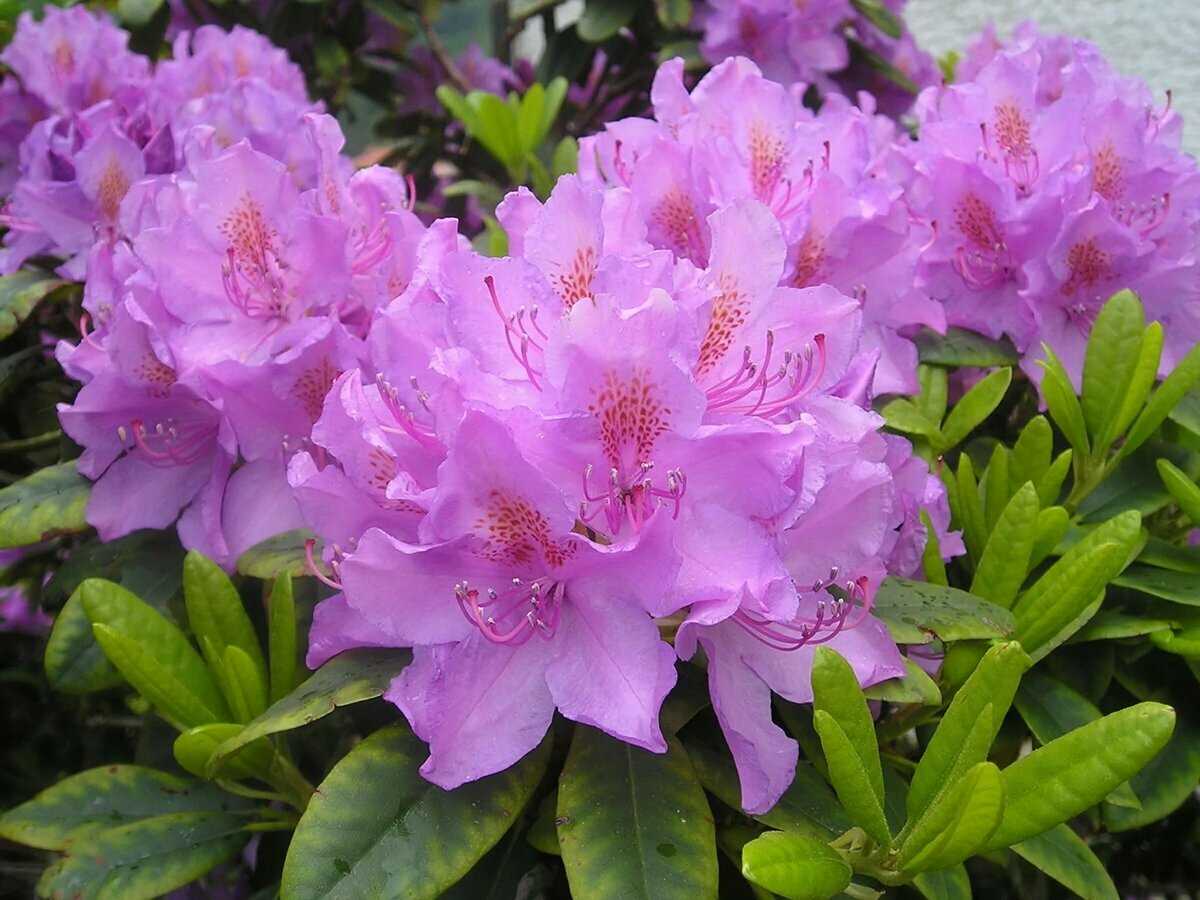
Сорт ‘Golden Lights’ отличается своими крупными желтыми цветами. Цветение бывает обильным и продолжительным. Растение имеет прямой рост и может достигать высоты около 1,2 метра.
Рододендрон ‘President Roosevelt’
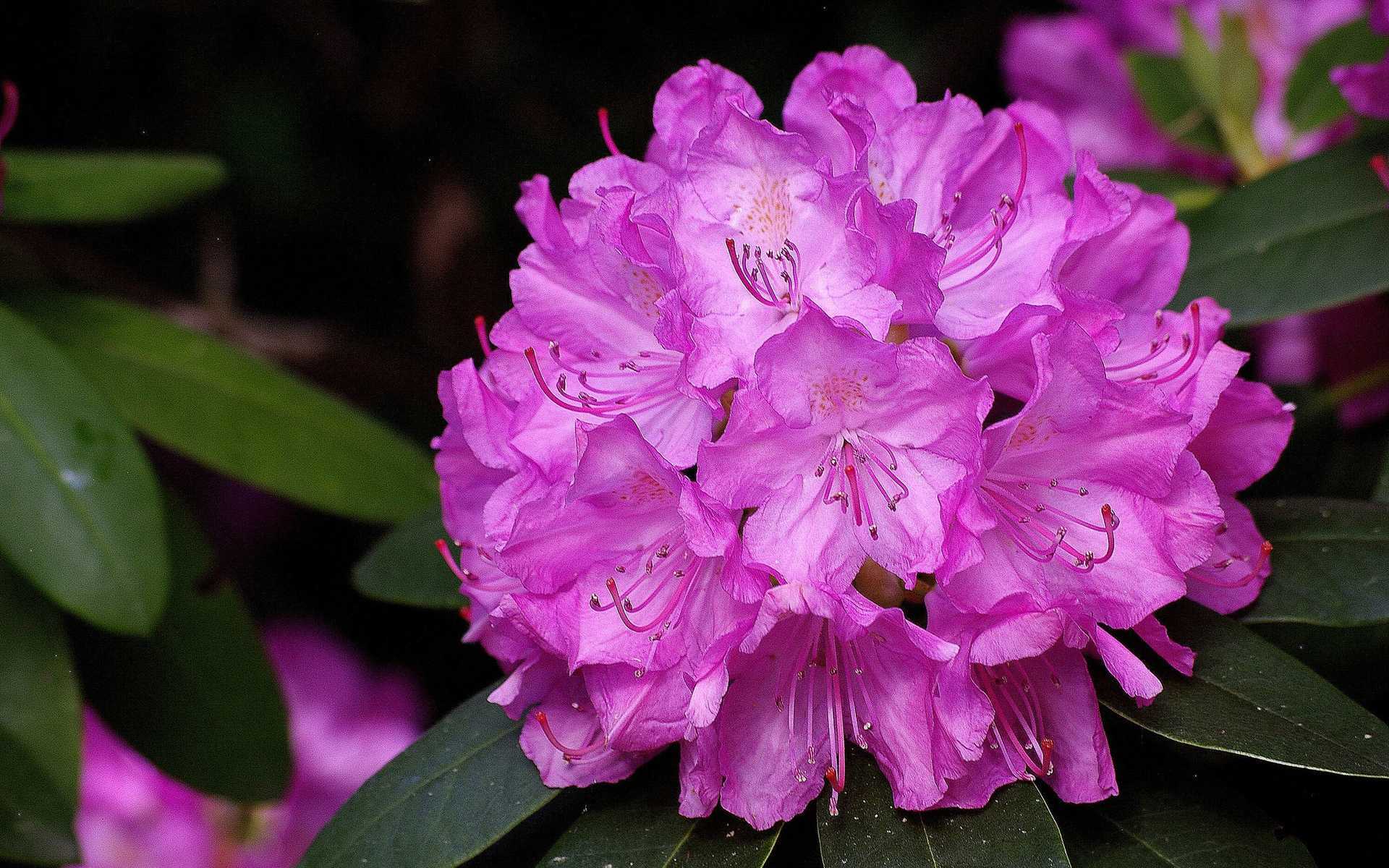
‘President Roosevelt’ — это сорт рододендрона с крупными фиолетовыми цветами, появляющимися в начале лета. Они имеют насыщенный оттенок и создают великолепный контраст с темно-зелеными листьями. Растение обладает прямым ростом и может достигать высоты около 1,5 метра.
Условия содержания и выбор места для посадки
Рододендрон — требовательное растение, поэтому для его успешного роста и развития необходимо обеспечить определенные условия содержания. Главное — выбор подходящего места для посадки.
Световой режим
Рододендроны предпочитают полутень или тень, поэтому их следует посадить в место, где будет достаточно непосредственного солнечного света утром и вечером, но при этом растение будет в тени во время самого интенсивного солнечного света.
Почва
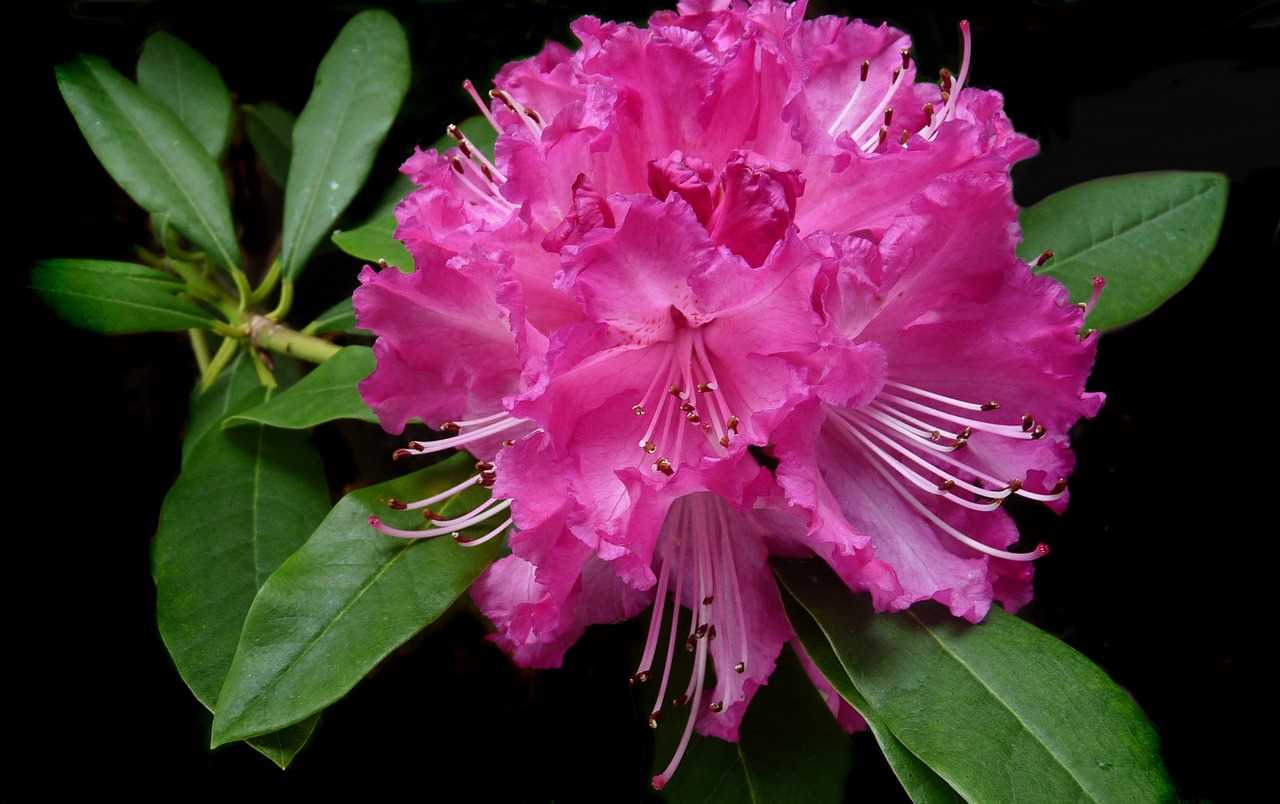
Так стоп!!! Вы всё ещё не подписаны на наши каналы в Телеграмм и Дзен? Посмотрите: ТГ - (@historyfantasydetectivechat) и Дзен (https://dzen.ru/myshortsstorys)
Рододендроны нуждаются в кислой почве с низким содержанием извести. Хорошим выбором являются кислые торфяные смеси, которые можно приобрести в специализированных магазинах. Также желательно обеспечить хорошую дренаж, чтобы предотвратить застой воды и гниение корней.
Влажность
Рододендронам требуется высокая влажность воздуха. Поэтому растение рекомендуется посадить рядом с бассейном, прудом или фонтаном. Также можно увлажнять воздух вокруг растения путем регулярного опрыскивания или использования увлажнителей.
Важно помнить, что рододендроны достаточно чувствительны к засухе и морозу, поэтому выбор места для посадки и обеспечение ему необходимых условий — важные аспекты успешного выращивания этого растения.
Подготовка почвы и правила посадки
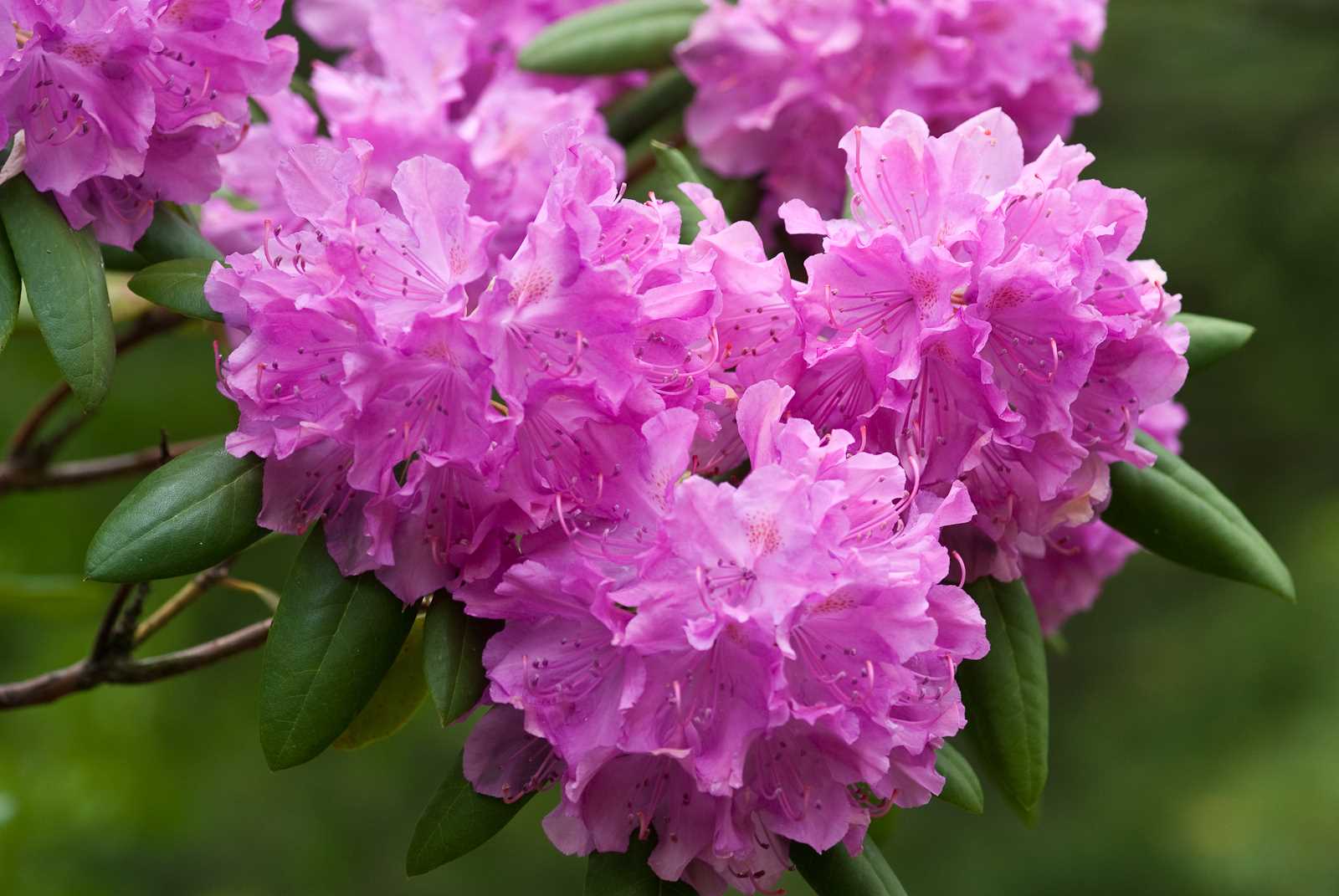
Правильная подготовка почвы перед посадкой рододендрона является одним из основных моментов успешного выращивания. Почва должна быть кислой с pH от 4.5 до 6.0, хорошо дренированной и богатой органическими веществами.
Перед посадкой необходимо провести тщательную подготовку почвы. Для этого рекомендуется удалить все сорняки и камни, а также обеспечить хорошую дренировку. Как правило, рододендроны не переносят застоя влаги, поэтому рекомендуется добавить песок или гравий при посадке.
Посадка рододендрона производится в яму глубиной и шириной около двух раз больше размеров корневой системы растения. Дно ямы следует проложить слоем дренажа из гравия или керамзита для обеспечения отведения лишней влаги.
Далее помещаем растение в яму и аккуратно расправляем корни, не заглубляя шейку корня. Затем яму заполняют подготовленной рыхлой почвой, при этом следует аккуратно уплотнять ее вокруг корневой системы.
После посадки растение необходимо обильно полить и мульчировать околоствольную зону слоем органического материала, чтобы сохранить влагу и предотвратить рост сорняков. Мульчирование также способствует сохранению почвенной температуры и защищает корни от перегрева.
Полив и удобрение
Рододендроны требуют регулярного полива, особенно в период активного роста. Необходимо поддерживать постоянно влажную почву, но избегать ее переувлажнения. Размеры и частота полива зависят от состояния растения, погодных условий и типа почвы. Рекомендуется проводить полив утром или вечером, чтобы избежать высоких температур и быстрого испарения влаги.
Для рододендронов важно правильно подбирать удобрения. Растения нуждаются в постоянном питании для здорового роста и красивого цветения. Используйте специальные удобрения для кислолюбивых растений, содержащие высокий процент азота, фосфора и калия. Удобрения следует вносить в почву весной и осенью. Перед удобрением необходимо полить растение, чтобы избежать ожогов корней. Кроме того, аккуратно перекопайте почву после внесения удобрений.
Некоторые садоводы предпочитают использовать органические удобрения для рододендронов. Компост, перегной или специальные органические удобрения содержат много микроэлементов и влияют положительно на здоровье растения. Органические удобрения можно использовать вместо или в сочетании с минеральными удобрениями. При использовании органических удобрений следует помнить, что они медленнее усваиваются растением и требуют более регулярного внесения.
Важно помнить, что переусердство в удобрении может нанести вред рододендрону. Перед использованием удобрений необходимо ознакомиться с рекомендациями производителя и соблюдать указанные дозы. Применение слишком большого количества удобрений может вызвать ожоги корней и ухудшить общее состояние растения.
Подрезка и формирование кроны
Подрезка и формирование кроны рододендрона являются важными процедурами для обеспечения его здоровья и эстетического вида. Правильное подрезание способствует созданию компактной и красивой кроны, а также стимулирует рост новых побегов.
Первоначальное формирование кроны проводится в молодом возрасте растения. Сначала удаляются поврежденные или больные ветви, затем определяется желаемая форма кроны. Необходимо сохранить основные ветви и удалить только те, которые мешают созданию гармоничной формы.
Подрезка рододендрона также может проводиться для контроля его размера и предотвращения слишком густого роста. Существует несколько методов подрезки, включая обрезку отцветших цветоносов, укорачивание побегов и удаление слабых или перекрывающихся ветвей.
Важно помнить, что подрезку рододендрона следует проводить осенью или весной, перед началом активного роста. При этом необходимо использовать остро отточенные и дезинфицированные инструменты, чтобы избежать заражения растения возможными инфекциями.
Совет: При подрезке рододендрона рекомендуется оставлять на каждой ветви небольшую Redудлу с 3-4 почками, чтобы стимулировать рост новых побегов.
Защита растений от вредителей и болезней
Рододендроны являются красивыми и популярными растениями, но, к сожалению, они подвержены атакам вредителей и различным болезням. Для того, чтобы сохранить растение здоровым и красивым, необходимо предпринимать меры по его защите.
Предотвращение атак вредителей
Один из основных способов предотвращения атак вредителей — это регулярный осмотр растений на наличие признаков их присутствия. Если вы заметили следы вредителей, такие как потемневшие листья, скрученные побеги или наличие живых насекомых, немедленно принимайте меры по их устранению. Зачастую, опрыскивание растения специальными инсектицидами является одним из самых эффективных способов борьбы с вредителями. Однако, перед применением любых химических средств, обязательно ознакомьтесь с инструкцией по их применению.
Профилактика болезней
Для профилактики болезней рододендронов рекомендуется соблюдать ряд мер. Во-первых, необходимо обеспечить хороший дренаж почвы, чтобы избежать стояния воды, что может привести к грибковым инфекциям. Во-вторых, регулярно обрезайте больные и поврежденные ветви, чтобы предотвратить распространение инфекции. Также следует регулярно подкармливать растения удобрениями, содержащими микроэлементы, которые способствуют укреплению иммунитета растений.
Следуя этим простым рекомендациям, вы сможете обеспечить надежную защиту ваших рододендронов от вредителей и болезней, сохраняя их здоровье и красоту на протяжении многих лет.
Фотогалерея рододендронов
Рододендроны давно завоевали популярность среди садоводов и любителей различных растений. Эти красивые цветущие кустарники привлекают внимание своими яркими и крупными цветами различных оттенков.
В нашей фотогалерее представлены разные виды рододендронов, каждый из которых обладает своей уникальной красотой. Некоторые растения имеют пышные цветы яркой красочной окраски, другие — нежные бутоны с деликатными оттенками. Но вне зависимости от вида, рододендроны всегда выглядят эффектно и украшают сад своим присутствием.
Виды рододендронов в нашей фотогалерее:
- Рододендрон Каталинский (Rhododendron Catawbiense)
- Рододендрон Японский (Rhododendron japonicum)
- Рододендрон Индийский (Rhododendron indicum)
- Рододендрон Золотистый (Rhododendron aureum)
- Рододендрон Желтынский (Rhododendron xanthostephanum)
Каждый вид рододендрона имеет свои особенности и требует особого ухода. Однако все они радуют своими красивыми цветами и могут стать настоящей украшением вашего сада или дачи.
Вопрос-ответ:
Какой рододендрон лучше всего подходит для выращивания в саду?
Для выращивания в саду лучше всего подходят рододендроны, которые хорошо адаптированы к климату вашего региона. Если вы живете в холодном климате, то стоит выбирать сорта, выведенные специально для холодных зон. Если ваш регион влажный, выбирайте рододендроны, которые хорошо переносят высокую влажность и дождливую погоду. Также обратите внимание на размеры растения и его цветы, чтобы выбрать самый подходящий для вашего сада.
Как правильно ухаживать за рододендроном?
Уход за рододендроном включает регулярное поливание, подкормку, обрезку и защиту от вредителей. Растение нужно поливать регулярно, особенно в период активного роста. Важно не пересушивать почву и не переувлажнять ее. Рододендроны требуют кислой почвы, поэтому регулярно подкармливайте растение кислотными удобрениями. Обрезка поможет формировать красивую крону и улучшить цветение. Также следите за состоянием растения, чтобы своевременно обнаружить и бороться с вредителями и болезнями.
Какие вредители и болезни могут атаковать рододендрон?
Рододендроны могут быть атакованы различными вредителями, такими как рододендроновая оса, мучнистый червец, листовертка и др. Они могут повредить листья и стебли растения. Кроме того, рододендроны подвержены таким болезням, как мучнистая роса, корневая гниль, бактериальное пятнистость и др. Для предотвращения и лечения этих проблем рекомендуется регулярно осматривать растение, проводить профилактическое обработку и своевременно принимать меры по борьбе с вредителями и болезнями.
Какие сорта рододендронов самые популярные?
Существует огромное количество сортов рододендронов, каждый из которых имеет свои особенности. Некоторые из самых популярных сортов включают Эверест, Парадис, Регинулум, Нордатлантик и др. Эти сорта отличаются красивыми цветками, устойчивостью к неблагоприятным условиям и легкостью ухода. Выбор сорта зависит от ваших личных предпочтений и условий выращивания.






